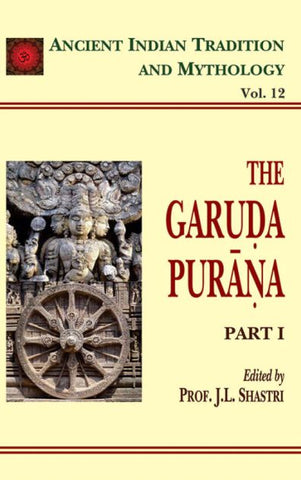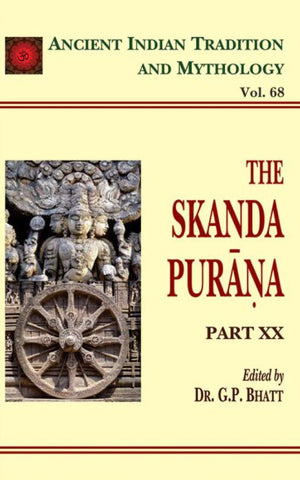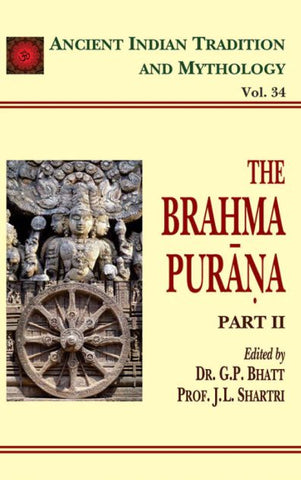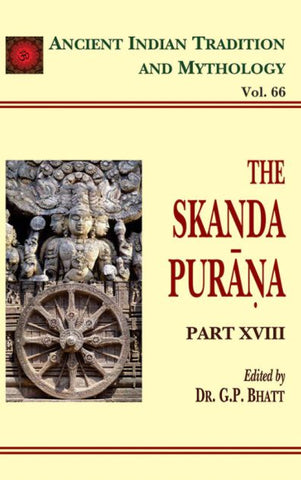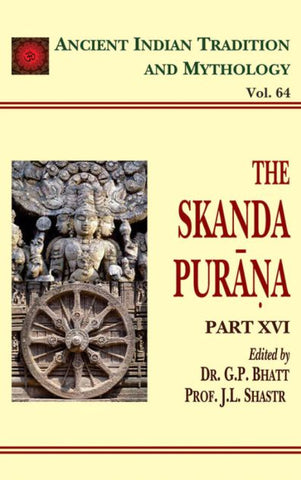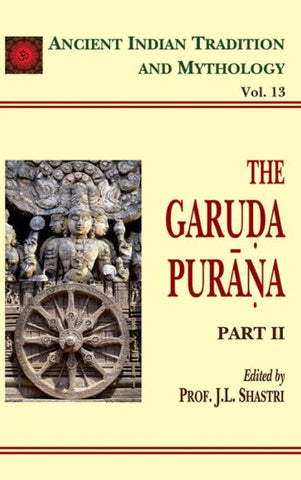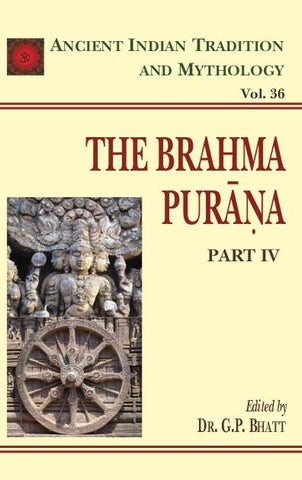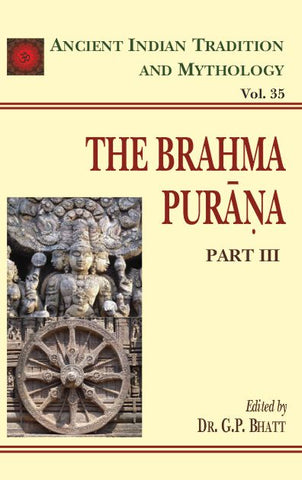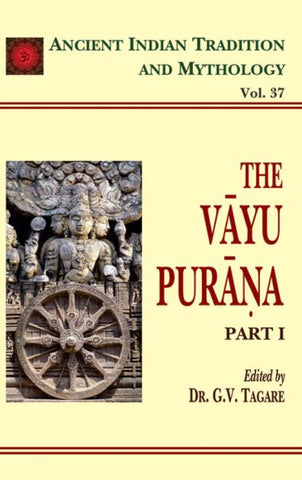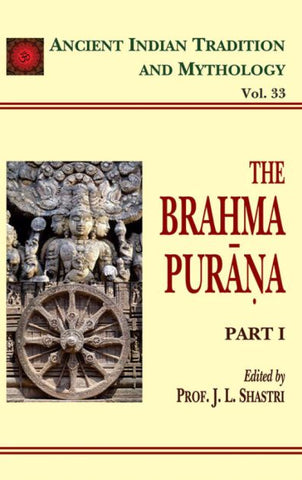Your cart is empty now.
Your search for "purana" revealed the following:
Garuda Purana Pt. 1 (AITM Vol. 12): Ancient Indian Tradition and Mythology
It is the biggest among Puranas. Named after Skanda, son of Siva, this Purana expounds doctrines and worship of Siva. It also contains legends of Siva, especially his battles with Daityas and Danavs. There are sections of Yoga, Dhyana (Meditation), and Jnana (Knowledge). It describes Siva temples in and around Varanasi. It is encyclopedic in character and throws light on different topics of general interest. This Purana is divided into Seven Khandas: Mahesvara, Brahma, Vaisnava, Kasi, Avantya, Nagara, and Prabhasa. While the first three include episodes related to the Trinity, the last four deal with the holy places of pilgrimage,... Read More
English, 455 Pgs. (HB)Skanda Purana Pt. 20 (AITM Vol. 68): Ancient Indian Tradition And Mythology
It is the biggest among Puranas. Named after Skanda, son of Siva, this Purana expounds doctrines and worship of Siva. It also contains legends of Siva, especially his battles with Daityas and Danavs. There are sections of Yoga, Dhyana (Meditation), and Jnana (Knowledge). It describes Siva temples in and around Varanasi. It is encyclopedic in character and throws light on different topics of general interest. This Purana is divided into Seven Khandas: Mahesvara, Brahma, Vaisnava, Kasi, Avantya, Nagara, and Prabhasa. While the first three include episodes related to the Trinity, the last four deal with the holy places of pilgrimage,... Read More
English, 416 Pgs. (HB)Brahma Purana Part 2 (AITM Volume 34): Ancient Indian Tradition and Mythology
The Purana is a class of literature that treats ancient religion, philosophy, history, sociology, politics, and other subjects. It is an Encyclopaedia of various branches of knowledge and ancient wisdom. It has been defined as a class of literature that contains material on the topics of Creation, Dissolution of Manus, Ages of Manus, Genealogies, and the History of glorious kings. For dealing primarily with these subjects it has been called Pancalaksana a little that was incorporated in the Puranas themselves and had become popular by the Fifth Century A.D., for it was included by Amarasimha in his lexicon 'Amarakosa'. But... Read More
English, 318 Pgs. (HB)Skanda Purana Pt. 18 (AITM Vol. 66): Ancient Indian Tradition And Mythology
It is the biggest among Puranas. Named after Skanda, son of Siva, this Purana expounds doctrines and worship of Siva. It also contains legends of Siva, especially his battles with Daityas and Danavs. There are sections of Yoga, Dhyana (Meditation), and Jnana (Knowledge). It describes Siva temples in and around Varanasi. It is encyclopedic in character and throws light on different topics of general interest. This Purana is divided into Seven Khandas: Mahesvara, Brahma, Vaisnava, Kasi, Avantya, Nagara, and Prabhasa. While the first three include episodes related to the Trinity, the last four deal with the holy places of pilgrimage,... Read More
English, 486 Pgs., (HB)Skanda Purana Pt. 16 (AITM Vol. 64): Ancient Indian Tradition And Mythology
It is the biggest among Puranas. Named after Skanda, son of Siva, this Purana expounds doctrines and worship of Siva. It also contains legends of Siva, especially his battles with Daityas and Danavs. There are sections of Yoga, Dhyana (Meditation), and Jnana (Knowledge). It describes Siva temples in and around Varanasi. It is encyclopedic in character and throws light on different topics of general interest. This Purana is divided into Seven Khandas: Mahesvara, Brahma, Vaisnava, Kasi, Avantya, Nagara, and Prabhasa. While the first three include episodes related to the Trinity, the last four deal with the holy places of pilgrimage,... Read More
English, 424 Pgs. (HB)Garuda Purana Pt. 2 (AITM Vol. 13): Ancient Indian Tradition And Mythology
It is multi-volume series work. The main purpose of this work is literary criticism, evaluating a great tradition of literature and presenting a comprehensive study of Sanskrit literature. So far 6 volumes have been published. Each volume presents literature itself in successive periods of its development. This fourth volume describes in more detail the extensive literature preserved from the 7th and 8th centuries. These centuries are relatively rich in extant movels, including those of Bana, Dandin, Kutuhala, Haribhadra, and Uddyotana, from which we, at last, get a fairly full view of the scope of this genre in medieval India. The... Read More
English, 828 Pgs. (HB)Brahma Purana Pt. 4 (AITM Vol. 36): Ancient Indian Tradition And Mythology
The Purana is a class of literature that treats ancient religion, philosophy, history, sociology, politics, and other subjects. It is an Encyclopaedia of various branches of knowledge and ancient wisdom. It has been defined as a class of literature that contains material on the topics of Creation, Dissolution of Manus, Ages of Manus, Genealogies, and the History of glorious kings. For dealing primarily with these subjects it has been called Pancalaksana a little that was incorporated in the Puranas themselves and had become popular by the Fifth Century A.D., for it was included by Amarasimha in his lexicon 'Amarakosa'. But... Read More
English, 400 Pgs. (HB)Brahma Purana Pt. 3 (AITM Vol. 35): Ancient Indian Tradition And Mythology
The Purana is a class of literature that treats ancient religion, philosophy, history, sociology, politics, and other subjects. It is an Encyclopaedia of various branches of knowledge and ancient wisdom. It has been defined as a class of literature that contains material on the topics of Creation, Dissolution of Manus, Ages of Manus, Genealogies, and the History of glorious kings. For dealing primarily with these subjects it has been called Pancalaksana a little that was incorporated in the Puranas themselves and had become popular by the Fifth Century A.D., for it was included by Amarasimha in his lexicon 'Amarakosa'. But... Read More
English, 400 Pgs. (HB)Vayu Purana Pt. 1 (AITM Vol. 37): Ancient Indian Tradition And Mythology
This two-volume in the series on Ancient Indian Tradition and Mythology constitutes the first part (Purvardha) of the Vayu Purana of which the second part (Uttarardha). This part contains the English translation of Chapters 1-61 comprising the first two Padas or Sections out of the total four Padas into which the Purana is divided, viz. Prakrya, Upodghata, Anusanga and Upasainhara Padas. Read More
English, 521 Pgs. (HB)Brahma Purana Pt. 1 (AITM Vol. 33): Ancient Indian Tradition And Mythology
The Purana is a class of literature that treats ancient religion, philosophy, history, sociology, politics, and other subjects. It is an Encyclopaedia of various branches of knowledge and ancient wisdom. It has been defined as a class of literature that contains material on the topics of Creation, Dissolution of Manus, Ages of Manus, Genealogies, and the History of glorious kings. For dealing primarily with these subjects it has been called Pancalaksana a little that was incorporated in the Puranas themselves and had become popular by the Fifth Century A.D., for it was included by Amarasimha in his lexicon 'Amarakosa'. But... Read More
English, 400 Pgs. (HB)
